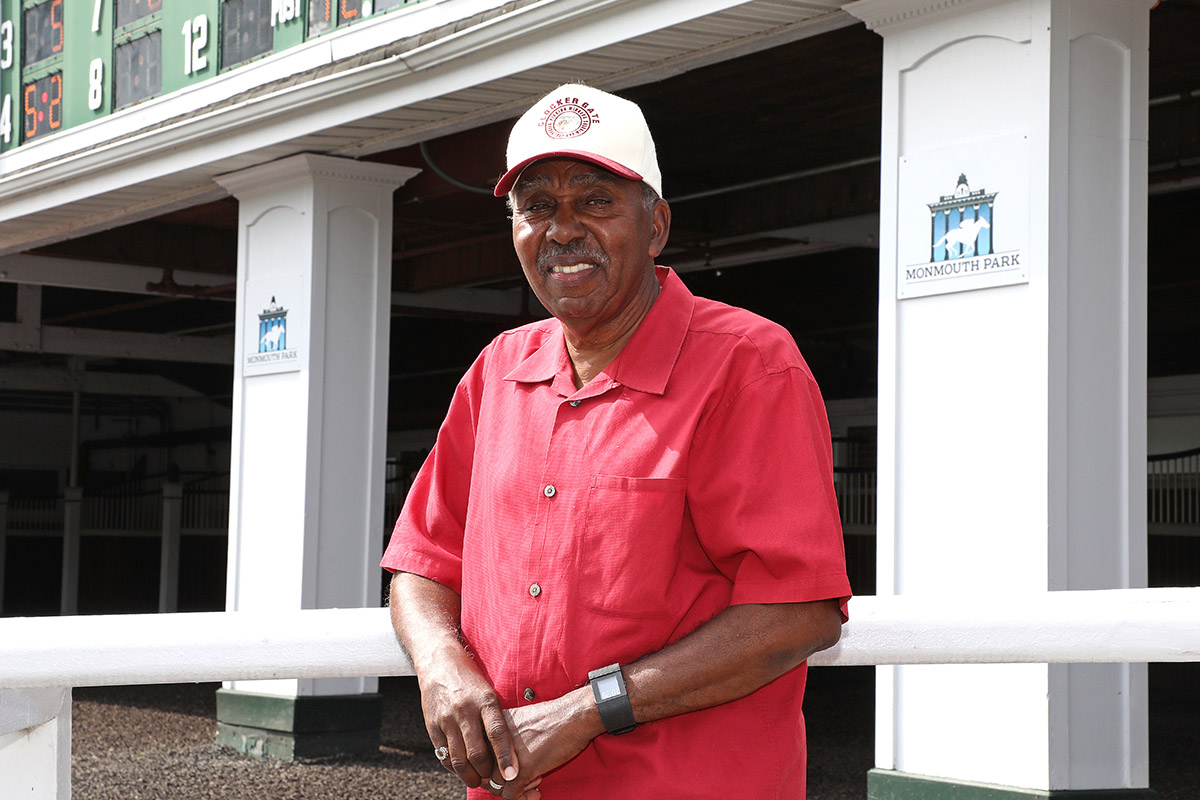News & Barn notes
Legendary Monmouth Park Clocker Gatha “Gate” Artis Celebrating His 50th Year Chronicling Workouts
September 05, 2022

For all of the considerable changes at Monmouth Park during the past 50 years, there remains one constant over that time.
Gatha “Gate” Artis is still in the clocker’s stand at 5:10 a.m. every day during the live meet keeping a watchful eye on horses working. This summer is his 50th year as a clocker at Monmouth Park, and for a guy who makes his living marking time he still can’t believe how fast that half century has gone.
“It seems like I just started yesterday,” he said. “I guess when you love your job that’s how it is.”
The 70-year-old Artis first showed up at Monmouth Park for the 1972 meet, shortly after graduating Penn State with a business degree. He tried working as an accountant but found the lure of the racetrack too strong to resist.
He’s considered one of the best in the business now.
“I don’t know of a horse that has gotten by him,” said Monmouth Park general manager Bill Anderson. “He knows the markings of horses. He’s the best clocker I know.”
Artis hasn’t simply adapted to changes in the business, he was the innovator behind moving workouts and identifying markings to a computer in the early 1980s.
“I learned a little bit about computers in college and, to be honest, I got tired of writing everything down in a notepad,” he said. “So I came up with a way to have everything transferred to a computer. Now everyone does that. But it was something no one was doing when I first started.”
The key to identifying horses during workouts, he said, starts with the heels. There is no advance notice of which horses will be working, or how many, on a given day, so being able to identify horses on looks alone is a fundamental part of the job.
“That’s where you have to look first – the heels,” he said. “On the coronet of the feet, sometimes they have white, sometimes they have nothing, but every horse’s foot is different and you have to recognize that. After you look at the feet you work your way up to the body and the horse’s head. But if you don’t start with the feet you’ll get thrown off. They all have different feet.”
Artis, who started clocking with his cousin at Green Mountain in Vermont as a teenager, also serves an adviser during horse sales “scouting horses like I do the workouts.”
“I consider myself pretty good at watching a horse move and picking out horses,” he said.
The biggest change he has seen from his vantage point is the way trainers work horses. Thirty or so years ago, trainers would work horses at a mile or six furlongs. These days, he says, it’s all three-eighths of a mile or a half-mile. That and the reluctance of modern trainers to work horses in the slop are the biggest differences Artis has seen.
He has also changed with the times, moving from a hand-held stopwatch he started with and used for many years to a more high-tech device that now records workouts in one-hundredths of a second.
And he remains one of the best at the job.
“The Monmouth Park clocking crew through the years is consistently the best, most accurate and the most reliable out there,” said Brad Thomas, Monmouth Park’s handicapper and morning line odds maker.
Artis said three horses stand out above all the ones he has watched work through the years: Holy Bull, Skip Away and a mare named Red Cross, who won 13 of her 19 career starts in the mid-70s.
“Skip Away was probably my favorite horse to watch,” he said. “He was an iron horse. He never missed a day at the racetrack. He was out there every day, all of the time, either working or galloping.”